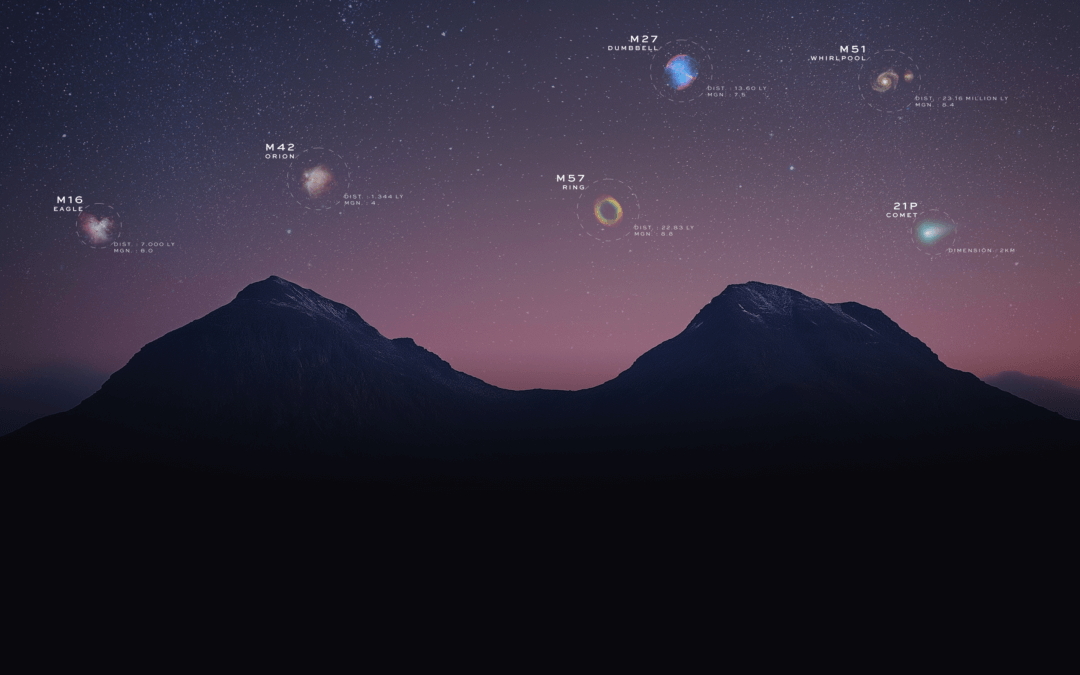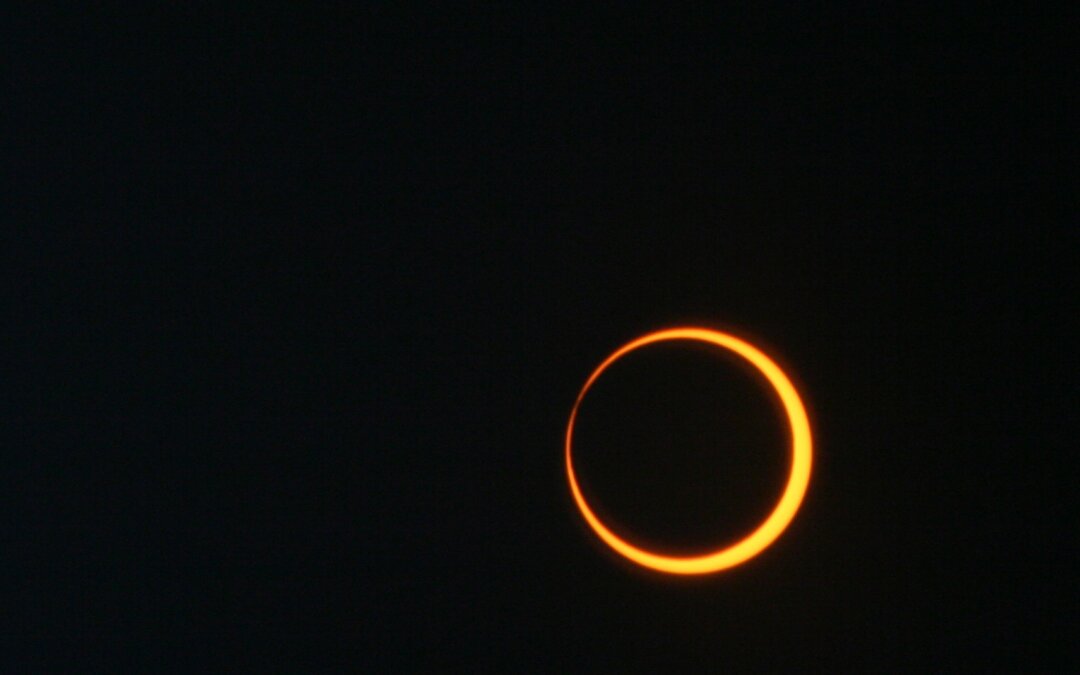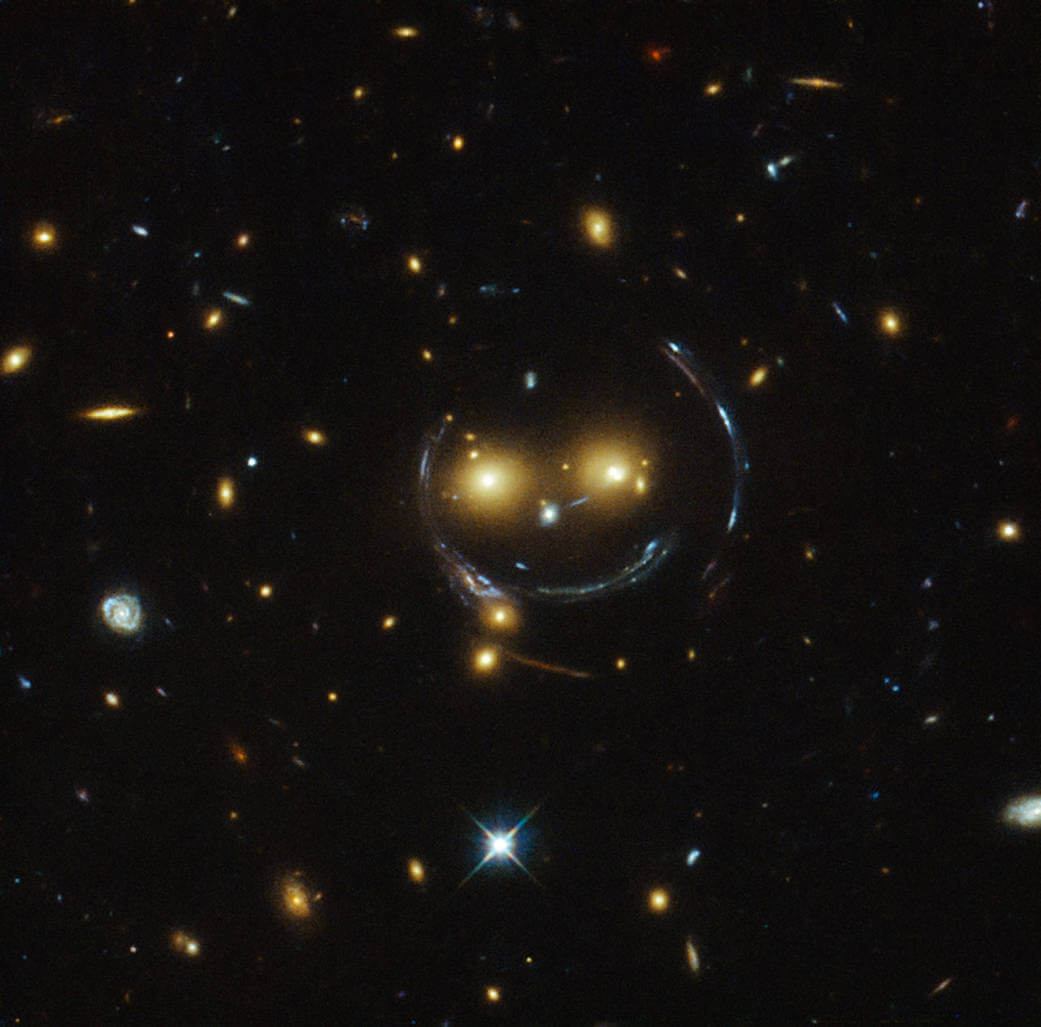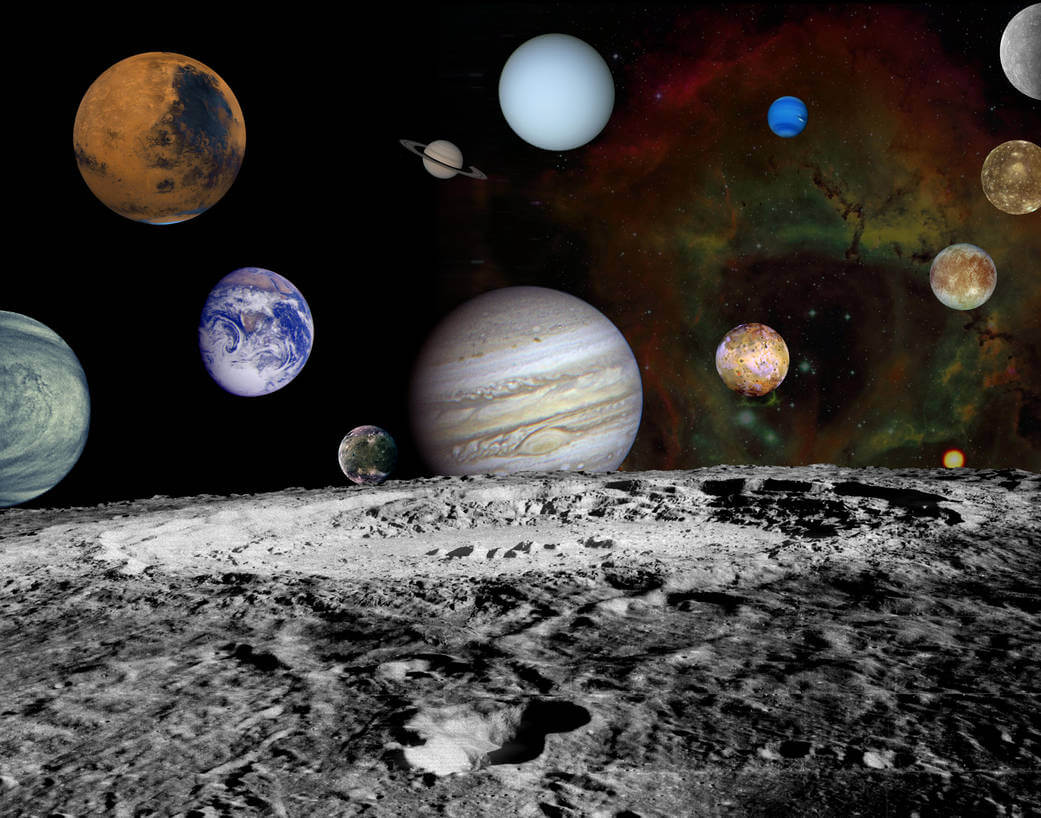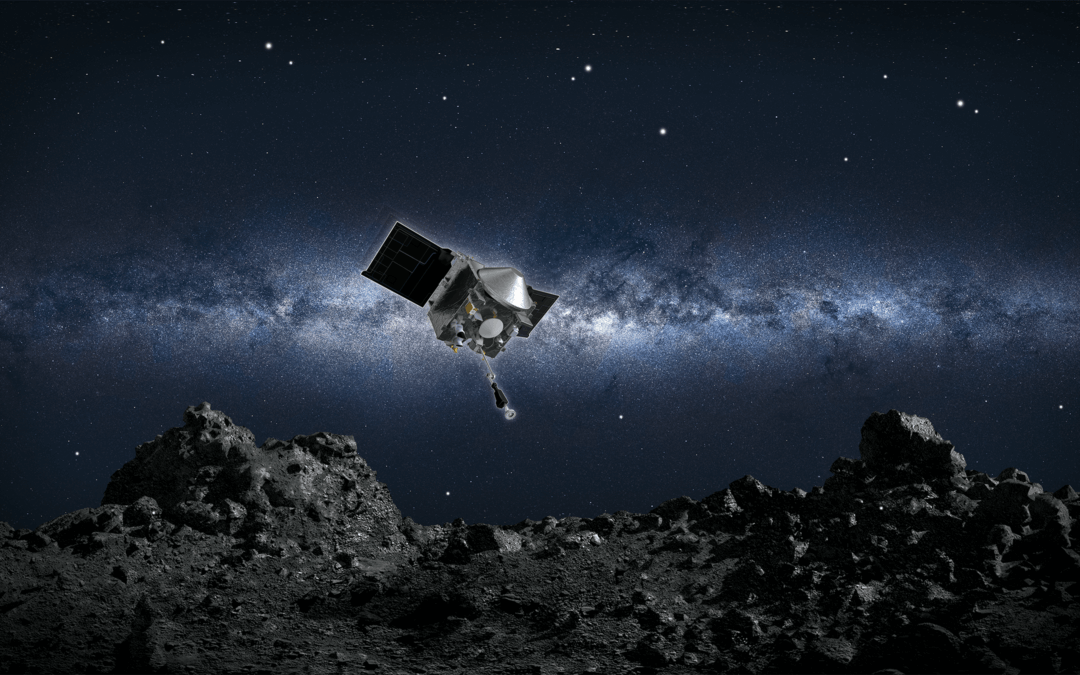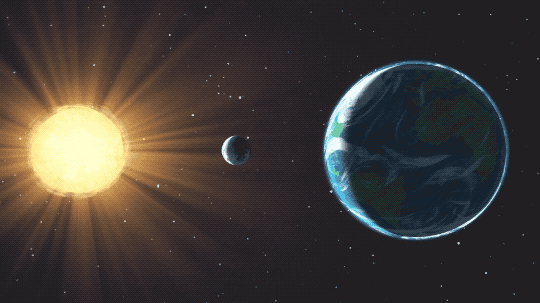
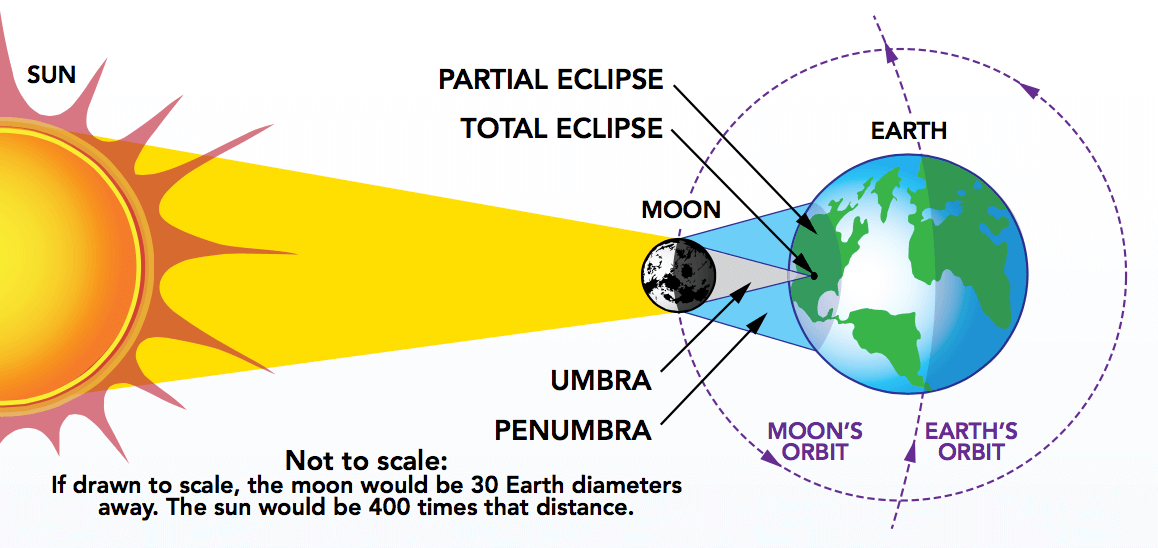
Credits: NASA. The umbra marks the deepest part of the moons shadow, where a total eclipse occurs in the path of totality. The penumbra is the outer part of the shadow, and causes a partial eclipse where it falls.
What is a Solar Eclipse?
A solar eclipse occurs when the Sun, Moon, and Earth align in such a way that the Moon passes in front of the Sun, partially or completely blocking its light from some parts of our planet.
There are three main types of solar eclipses: total, partial, and annular. During a total solar eclipse, the Moon is the right distance away so that it appears large enough to completely cover the Sun, leading to a brief period of darkness in the path of totality, or the path of the Moon’s shadow. The only thing left to see of the Sun is its hot and expansive corona, or outer atmosphere, which is only visible to us during these events.
Perhaps the best thing about total eclipses is that even if you are not in the path of totality, where the entire sun will be covered, you may still see a partial eclipse. In a partial solar eclipse, the Moon covers only a portion of the Sun, resulting in a partial dimming of sunlight.
An annular solar eclipse occurs when the Moon is farthest from Earth, causing it to appear smaller than the Sun and creating a ring of light or “Ring of Fire” around the darkened, moon-covered center.
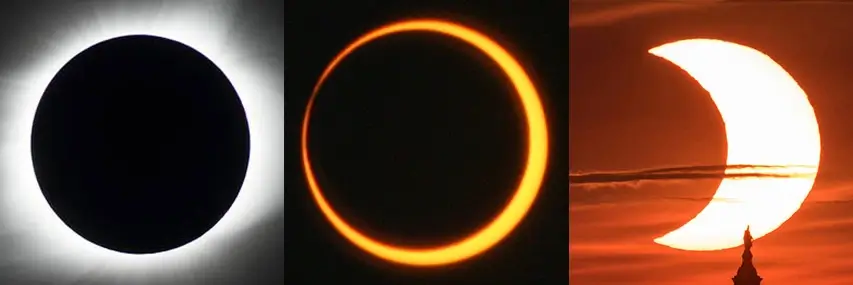
From left to right, images show a total solar eclipse, an annular eclipse, and a partial eclipse. Credits: Total eclipse (left): NASA/MSFC/Joseph Matus; annular eclipse (center): NASA/Bill Dunford; partial eclipse (right): NASA/Bill Ingalls
When is the Next Solar Eclipse?
The next solar eclipse will occur on October 14, 2023, when parts of North, Central, and South America will witness the glory of the “Ring of Fire” during an annular eclipse. The path of annularity (where the full “Ring of Fire” will be visible) will pass across major cities in the US like Albuquerque, NM and San Antonio, TX.
Although a marvelous sight to see, this is just the warm up! April 8, 2024 will welcome a total solar eclipse, visible to the US, Mexico, and Canada. The path of totality for this total eclipse crosses a record number of cities, joining millions of people together to watch this natural wonder. Even if you are not in the path for either eclipse, a huge swath of the Americas will be able to see the Moon partially cover the Sun. Check the map below!
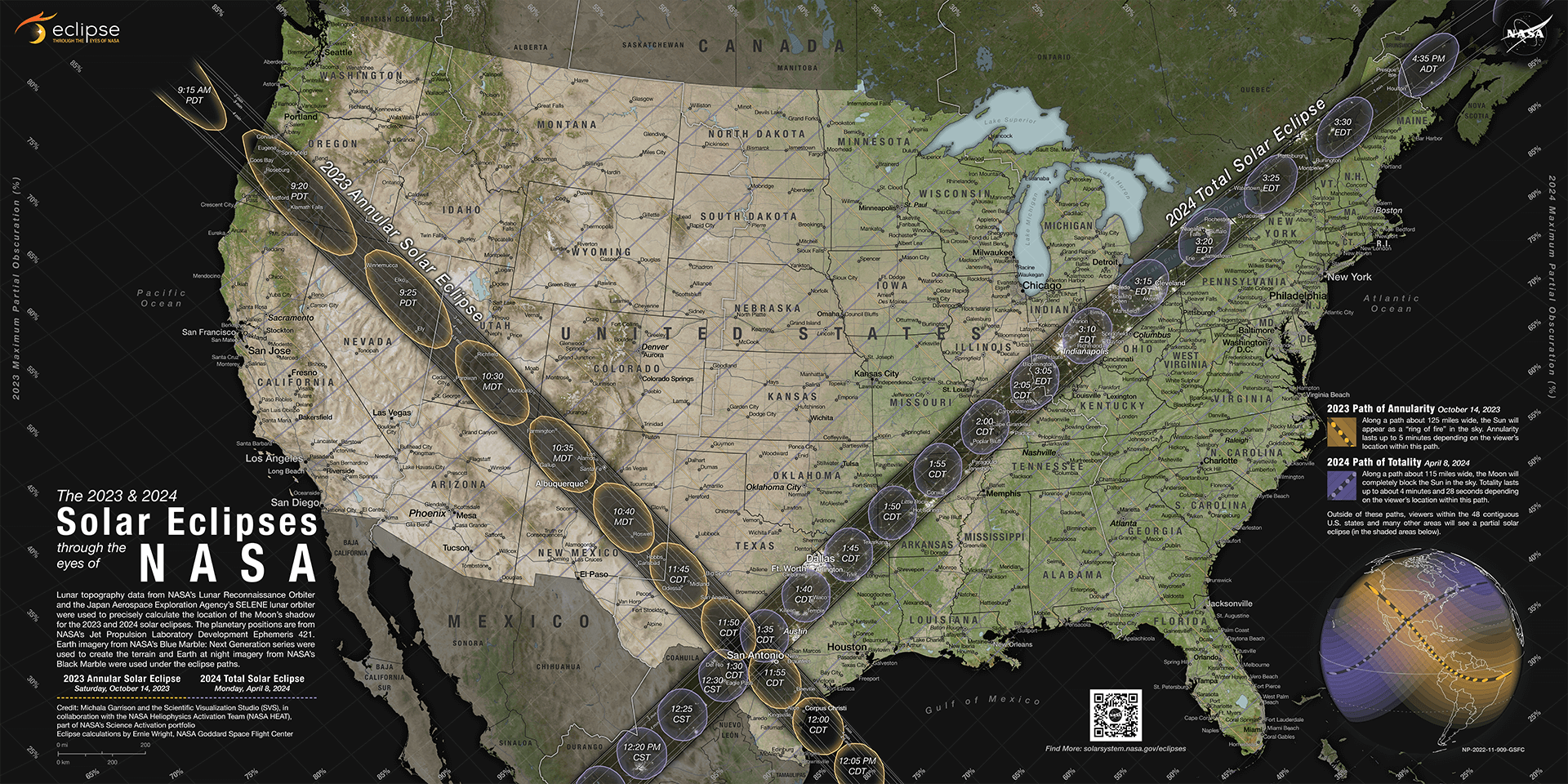
The Unistellar Solar Experience
Using our new Smart Solar filter, you can easily and safely share the solar eclipse experience together with your family and friends. Looking directly at the Sun is never safe, even during a solar eclipse, which passes by quickly. This is why the Smart Solar Filter was designed to seamlessly fit onto your Unistellar telescope and allow you to watch the eclipse with others through your smartphone or tablet. Taking images of a solar eclipse will even be a breeze!
With GoTo Sun and Solar Tracking, you will never lose sight of the eclipse as the Sun moves across the sky, so you are guaranteed to witness and capture breathtaking events like the Ring of Fire! Don’t miss out on once-in-a-lifetime opportunities to be inspired by the beauty of the Sun – pre order yours today to take part in the solar experience! Learn more here.
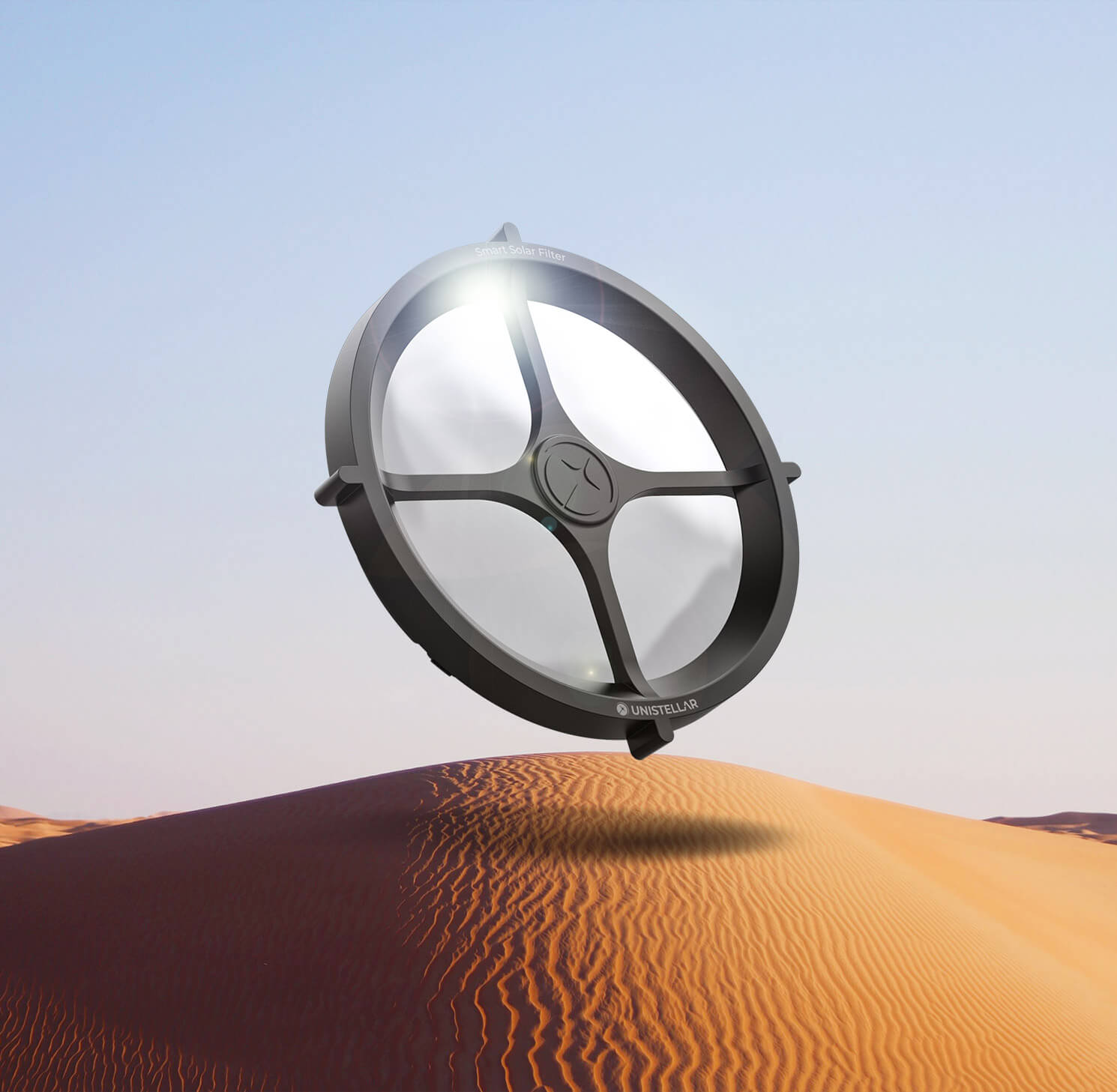
Further readings
3 Reasons to observe this month
Every month, discover three unmissable celestial events to observe with your Unistellar telescope.
Unistellar Community Included In Multiple Scientific Papers
Did you know Unistellar Citizen Astronomers are often cited in published scientific papers? Find out how you can contribute too!
When Is the Next Solar Eclipse, and How to Observe It With a Unistellar Telescope
An annular solar eclipse is visible from the Americas on October 14. Learn how to witness the Ring of Fire with your Unistellar Telescope!
Halloween Observing Guide: Spooky Deep-Sky Objects
These Halloween deep-sky objects will add some light to those dark, spooky nights. Treats, tricks, and telescopes await!
How Big Is the Solar System?
If the Sun were the size of a basketball, do you know how big the Earth would be? Find out how big the Solar System really is!
See OSIRIS-REx, NASA’s First Asteroid Sample Return Mission, as it Drops off Pieces of Asteroid Bennu
NASA's first asteroid return sample mission, OSIRIS-REx, is headed back towards Earth with precious cargo. Join us in observing it Sept. 24!
